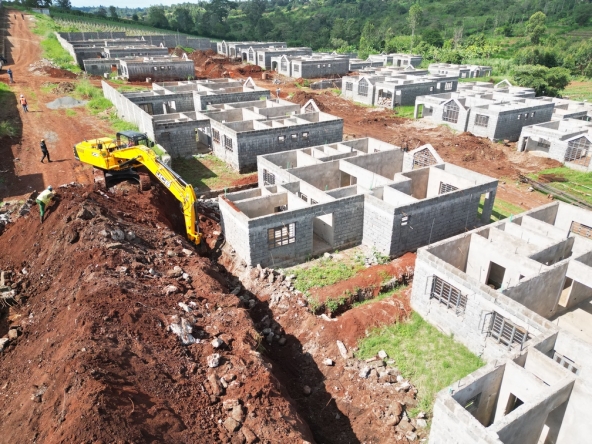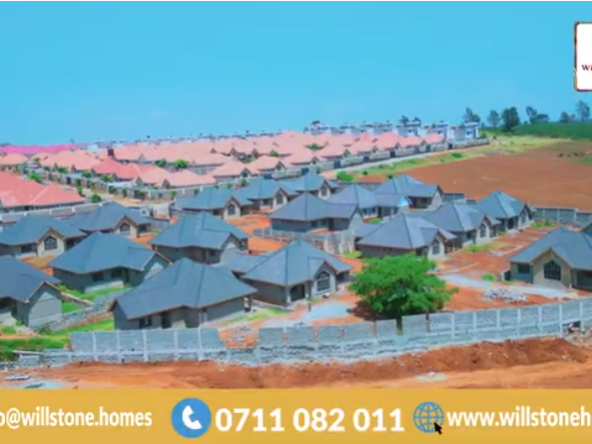In Kenya’s fast-growing housing market, beauty and affordability often dominate buyer decisions. Yet beneath every elegant finish and modern façade lies something more fundamental — structural integrity. Whether you’re building or buying, understanding the principles of structural engineering in Kenya could mean the difference between a lasting investment and a costly risk.
Across Nairobi and other urban centres, developers are pushing for speed and affordability, but that race sometimes exposes flaws in quality control, material use, or supervision. Tragic collapses in places like Ruiru and Kasarani have underscored why structural soundness must never be an afterthought.
What Structural Integrity Means
Structural integrity refers to a building’s ability to resist loads and forces — such as gravity, wind, seismic tremors, and occupancy — without collapsing or developing dangerous cracks. In simple terms, it’s the science behind a structure’s stability, durability, and safety.
Kenya’s structural engineers use calculations and simulations to ensure that every column, beam, slab, and foundation can withstand expected stresses. A structurally sound home remains stable throughout its lifespan, even under environmental stress or moderate seismic activity.
Kenya’s Structural Safety Framework
Kenya operates under the Building Code of 2009 and is transitioning toward updated standards guided by the National Construction Authority (NCA) and Kenya Bureau of Standards (KEBS). These regulations align with the Eurocodes, widely accepted international benchmarks for structural design.
In Nairobi County, before construction approval, developers must submit certified drawings prepared by registered structural engineers. The county’s approval process checks:
- Load calculations (dead loads, live loads, wind loads)
- Foundation design reports
- Material specifications (steel grade, concrete mix ratios)
- Soil test results
- Engineer’s certification of safety compliance
Failure to meet these requirements often leads to rejected plans or delayed permits.
Common Structural Risks in Nairobi’s Construction Scene
- Substandard materials: Poor-quality cement, weak steel bars, or untested sand and aggregates can significantly compromise strength.
- Overloading: Converting single-storey designs into multi-storey structures without reinforcement is a major cause of collapse.
- Poor workmanship: Inadequate curing, improper concrete mixing, or hurried pours can cause weak slabs and beams.
- Unapproved alterations: Removing load-bearing walls or columns during renovations can destabilize entire buildings.
- Neglected maintenance: Cracks, corrosion, and water damage left unattended often lead to structural failure over time.
Why Structural Engineering Matters for Every Homebuyer
Even if you’re not an engineer, understanding the value of professional structural design and inspection helps protect your investment. In Nairobi, property buyers are advised to:
- Request structural design documents and approvals before purchase.
- Engage independent structural engineers for inspection during or after construction.
- Ask developers whether geotechnical studies and load tests were conducted.
- Prioritize developers and contractors registered with NCA and Institution of Engineers of Kenya (IEK).
TABLE: How Structural Engineering Protects Homeowners in Kenya
| Safety Element | Structural Engineer’s Role | Common Oversight if Ignored | Impact on Your Home |
|---|---|---|---|
| Foundation Design | Conducts soil analysis and recommends foundation type | Wrong footing for soil type | Cracking, uneven settlement |
| Reinforcement Detailing | Specifies correct bar sizes and spacing | Under-reinforcement | Beam or slab collapse |
| Concrete Quality Control | Supervises mix ratio and curing | Weak concrete | Shortened lifespan |
| Load Path Analysis | Ensures loads transfer safely from roof to foundation | Poor load distribution | Structural failure |
| Material Testing | Approves materials through lab tests | Substandard steel or cement | Reduced structural strength |
| Inspection and Certification | Signs off at every stage | Missing oversight | Hidden structural defects |
Role of Technology in Modern Structural Engineering
Emerging tools are transforming structural engineering in Kenya. Finite element modeling (FEM) software allows engineers to simulate building performance under load before breaking ground. Drone surveys and 3D laser scanning are also improving project supervision, while Building Information Modelling (BIM) integrates structural, electrical, and mechanical systems in one digital model — reducing costly conflicts during construction.
In addition, precast and modular construction systems (increasingly used in large Nairobi estates) rely on strict structural testing and factory-based quality control, further enhancing safety and speed.
When to Call a Structural Engineer
Homeowners often assume engineers are only needed during design. In reality, you should consult one:
- Before purchasing a home — for a professional structural inspection.
- During renovations — to assess wall removal or additional floors.
- After visible damage — cracks, sinking, or leaning walls may indicate structural issues.
- Before resale — certified structural safety reports can increase property value.
The Cost of Neglect
The NCA estimates that over 70% of collapsed buildings in Kenya lacked professional supervision or used unqualified personnel. Repairing structural defects after construction can cost 3–5 times more than preventive engineering design.
In addition to financial loss, building collapse poses enormous human risk. Structural integrity, therefore, isn’t just a technical concern — it’s a moral and civic responsibility shared by every builder, developer, and homeowner.
Building for Generations
The next time you admire a home’s architecture or polished finish, remember: its real beauty lies in unseen precision — the structural engineering that makes it safe, solid, and enduring.
As Kenya’s real estate industry matures, safety and engineering excellence must remain the foundation of every dream home. From Nairobi’s estates to coastal villas, the call is clear: let’s build for generations, not for the moment.
At Willstone Homes, we believe that true beauty begins with strength you can’t see — the structural integrity beneath every wall, roof, and foundation. Each of our projects is guided by certified structural engineers in Kenya, rigorous material testing, and compliance with national building codes to ensure lasting safety and durability. From design to handover, we don’t just build homes that look good — we build homes that stand firm for generations.




